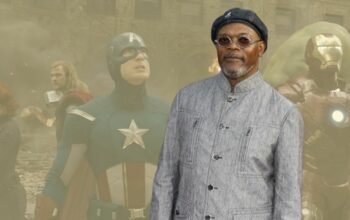Aaron Stanford is an enigmatic figure in the entertainment industry, captivating audiences through a mix of compelling performances and an intriguing personal narrative. While he may not bask in the limelight of the highest celebrity echelons, his dedication to his craft has garnered him a loyal following and a respectable net worth, estimated to be around $2 million. This figure, while modest compared to some Hollywood titans, reflects his steady yet thoughtful ascent in an ever-evolving industry.
Born on March 27, 1976, in Westford, Massachusetts, Stanford’s early life painted the portrait of an artist in the making. He was raised in a nurturing environment that placed high value on education and the arts. His father, an academic and educator, and his mother, who was involved in theater, ensured that Aaron received not just the fundamentals of learning but also an exposure to creativity that would ignite his passion for performance. Growing up in a culturally rich locality allowed him to flourish, experimenting with various artistic outlets, from high school drama clubs to local theater productions.
Stanford’s educational journey took him to the University of the Arts in Philadelphia, where he honed his skills in the craft of acting. He immersed himself in the world of drama—a parallel universe filled with passionate souls striving to convey the inexpressible. This phase of self-discovery was pivotal as it provided him with the tools necessary to traverse the labyrinth of the entertainment industry. With an impressive foundation under his belt, Stanford made his foray into the professional realm with confidence and determination.
The year 2001 marked the beginning of Stanford’s on-screen career, with his breakout role as the formidable Pyro in the blockbuster film “X2: X-Men United.” His portrayal offered a taste of his versatility, showcasing a character that oscillated between heroism and villainy. This captivating role positioned him as a noteworthy talent, allowing him to ride the waves of Hollywood’s scouting gaze. Subsequently, his involvement in various film and television projects, including “The Hills Have Eyes,” “12 Monkeys,” and “Nikita,” only solidified his standing as a reliable actor.
Though his career has oscillated through various genres, from horror to science fiction to drama, each role has added a layer of complexity to his professional persona. He is adept at bringing characters to life in a multifaceted manner. His performances often linger in the imagination of viewers, much like a haunting melody that echoes long after the notes have faded. In this way, Stanford transcends the notion of the typical Hollywood actor, embodying a distinctive depth and range that few can claim.
One of the remarkable aspects of Aaron Stanford’s career is his ability to navigate both mainstream and independent cinema. This duality allows him to explore diverse storytelling avenues, thus enriching his artistic palette. His participation in indie films often provides a refreshing antidote to the formulaic nature of commercial cinema. It is here, amid gritty narratives and nuanced characters, that his talents shine with vibrancy, allowing him to explore the existential themes that permeate human experience.
Beyond the glitz and glamour often associated with Hollywood leading men, Stanford’s journey has not been devoid of controversy or challenges. He faced significant hurdles, including the intense scrutiny that comes with being in the public eye. There have been moments when his unconventional choices and dedication to independent filmmaking were questioned, leading some critics to label him as a “difficult” actor to cast. Yet, these very intricacies highlight his commitment to authenticity—a steadfast refusal to compromise his artistic integrity for the sake of commercial success.
Aaron Stanford is also an intriguing figure because of his deep ties to the genre of science fiction—a realm often laden with philosophical inquiries and societal reflections. His role in “12 Monkeys,” a time-travel narrative steeped in existential questions, exemplifies this connection. Here, Stanford showcased a unique blend of vulnerability and strength, portraying a character grappling with notions of fate and free will. This performance not only captivated audiences but also allowed him to become a prominent figure within the sci-fi community—a domain where fervent fans often regard actors as torchbearers of cherished narratives.
Perhaps one of the lesser-known facets of Stanford’s life is his love for the intricacies of the craft itself. He often cites his fascination with the rehearsal process as one of the most rewarding aspects of acting. This dedication speaks volumes about his character; instead of seeking the limelight, he revels in the gradual metamorphosis of a character, much like a sculptor chiseling away at a block of marble to reveal the masterpiece within. Such dedication is a testament to his artistic integrity—a quality that resonates deeply with both colleagues and fans alike.
In conclusion, Aaron Stanford’s journey through the entertainment landscape is a rich tapestry of ambition, creativity, and resilience. With an estimated net worth of around $2 million, he embodies the notion that success in Hollywood is not solely defined by monetary wealth but rather by the impact one leaves on the audience. From his immersive early life to his captivating career, marked by significant roles and intriguing choices, Stanford remains a distinctive presence. Whether navigating the complexities of mainstream cinema or exploring the depth of independent films, his story serves as a compelling reminder of the beauty inherent in authenticity and the pursuit of artistic fulfillment.






